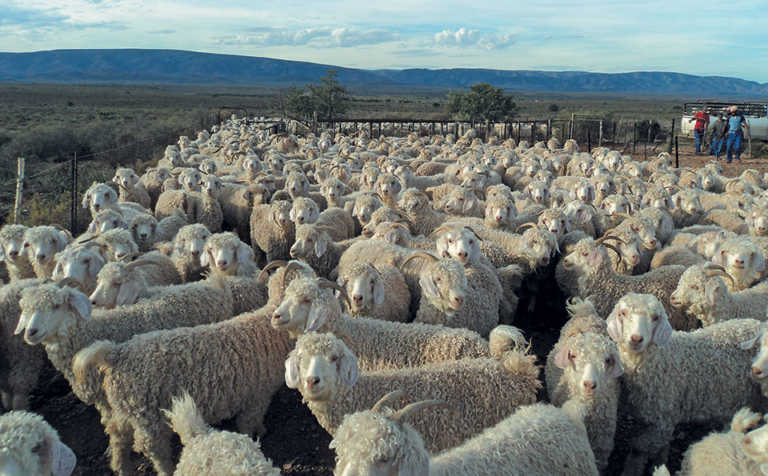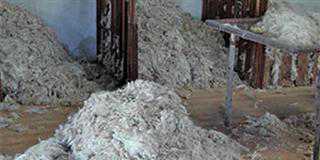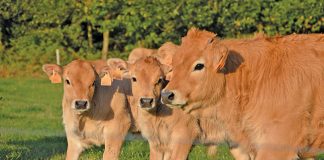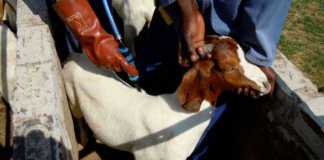
Photo: Roelof Bezuidenhout
Shearing according to set classing standards ensures a good name for the South African clip, most of which is exported, says the National Wool Growers’ Association (NWGA).
The emphasis to date has been to eliminate foreign objects (anything from pieces of metal to black hairs) from a wool or mohair clip. Experts predict that chemical contamination is set to become equally important in this environmentally-conscious world.
Chemical contamination of wool or mohair fleeces can come from various sources, including from crop spray that accidentally gets into the fleece, says NWGA production advisor, Jan Louis Venter.
Sophisticated lab tests can pick up minute chemical traces in a greasy wool or mohair sample.
These can be traced right back to the producer, which is a problem for the farmer. Some of these active ingredients even leave a residue in the finished clothing!
Keep the clip clean
Dip animals with only approved stock remedies to keep them as clean and healthy as possible. The healthier they are, the less handling they will need, and the less they are handled, the cleaner their fleeces will be.
Generally, dip a flock as soon after shearing as possible. Do not dip them when they have long fleeces.
The NWGA provides tips on ensuring a clean wool or mohair clip:
- Provide and use the appropriate tools and sorting facilities.
- Ensure there are enough workers for the shearing process, and inform them about the dangers of contamination.
- Clean the holding pens and shearing shed thoroughly before shearing starts. Store away all tools, bolts and other metal objects.
- Minimise potential animal hair, feather and baling twine contamination. Keep dogs and other animals away; dog hair is a particular problem. Use a rubber rake rather than an ordinary broom to sweep the shearing shed floor. Never use baling twine in the shearing shed, not even for hanging tools. Provide a litter bin with a lid for cigarette butts and other debris.
- Provide shearers with a fresh, strong disinfectant every day. Disinfect the shears before shearing every sheep, as this prevents the spread of sheep lice that can reduce the quality of the clip.
- Discuss double cuts with the shearers and agree upfront about it. If possible, avoid all stock remedies such as wound sprays that can stain wool.
- Shear the flock according to age groups such as lambs, hoggets, young animals (2-tooth) and old ewes, as this will simplify fleece sorting.
- Remove wool or mohair stained with branding ink, tar, urine, dung, blood or paint, or discoloured by fungi or chemicals, before shearing. Pack it separately.
- Remove blood-stained wool during the shearing process and ask shearers to discard fragments of skin cut off during shearing. These quickly become dry and hard and can damage carding machines.
- Top knots and cheek wool can contain hairy fibres. Pack these with the lox, no matter how long and attractive they look. Coloured fibres are often found around the horns; don’t pack them with wool from bellies or ‘pieces’.
- Outside the shed, turn all new wool or mohair packs inside out and shake out all loose fibres. Ensure that all hooks and press spikes are sharp, and use only the prescribed nine bale hooks. Blunt spikes can break or force fibres from the wool pack into the wool. Apply marking ink in such a way that it doesn’t seep into the bale.Email Jan Louis Venter at [email protected].












